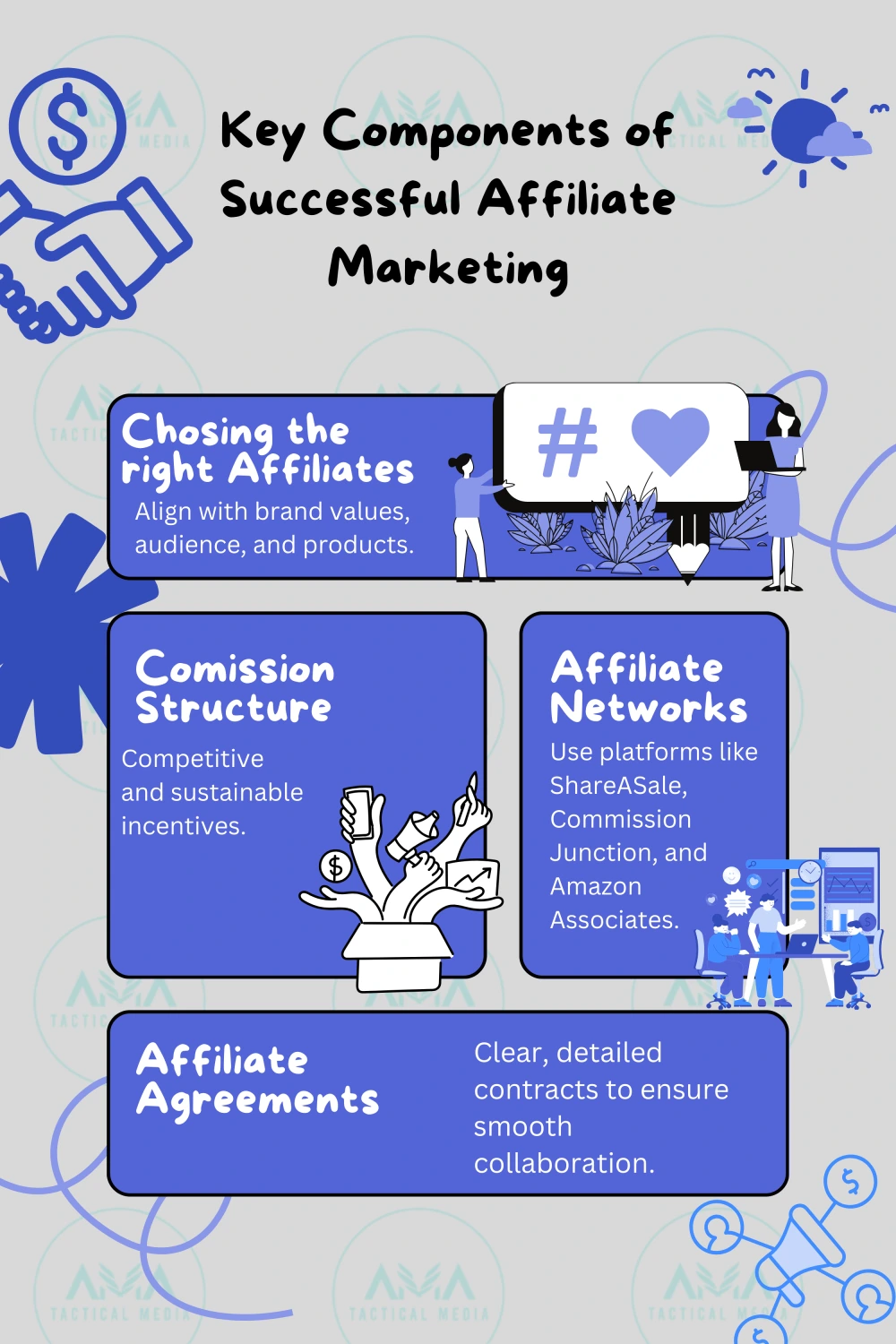
Article | Published:
Affiliate Atlas: Charting Courses in the World of Marketing Partnerships
Affiliate marketing is an influential strategy that bridges the gap between businesses and potential customers through partnerships. In this dynamic landscape, understanding how to effectively navigate, and leverage affiliate networks is essential for maximizing reach and generating revenue. This blog post explores the intricacies of affiliate marketing, providing a comprehensive guide for businesses looking to chart successful courses in this lucrative field.
At AMA Tactical Media, we have thrived by incorporating modern marketing strategies such as leveraging digital platforms, utilizing data-driven decision-making, engaging in influencer partnerships, and focusing on personalized content. Thus, we have created resonant brand experiences that align with contemporary consumer behaviours and technological advancements.
Understanding Affiliate Marketing
Affiliate marketing is a performance-based marketing strategy where a business rewards one or more affiliates for each visitor or customer brought about by the affiliate’s own marketing efforts. This model is beneficial for both the merchant and the affiliate, as it allows merchants to extend their marketing reach and enables affiliates to earn revenue from their promotional activities.
AMA Tactical Media has excelled in affiliate marketing by strategically selecting affiliates who align closely with our clients’ brands and target audiences, ensuring maximum reach and impact. We have developed competitive and attractive commission structures to retain top-tier affiliates and motivate performance. Additionally, our use of advanced tracking tools and regular communication has optimized our partnerships, driving significant and measurable results for our clients.

Key Components of Successful Affiliate Marketing
Choosing the Right Affiliates: The success of an affiliate program largely depends on partnering with the right affiliates. These partners should have a strong alignment with the brand’s values, audience, and product offerings. Businesses should seek out affiliates who have engaged audiences that match the business’s target demographic.
Developing a Competitive Commission Structure: Attracting top-notch affiliates requires a compelling commission structure. This could be a percentage of sales, a flat fee per lead, or other performance incentives. It’s crucial that the rewards are attractive enough to incentivize affiliates but also sustainable for the merchant’s business model.
Utilizing Effective Affiliate Networks: Affiliate networks act as intermediaries between merchants and affiliates, providing a platform where affiliates can find programs that suit their niche. Networks like ShareASale, Commission Junction, and Amazon Associates simplify the process of managing and scaling affiliate programs.
Crafting Clear Affiliate Agreements: Clear, detailed agreements are essential to ensure both parties understand their responsibilities, compensation structure, and other critical aspects of the partnership. These agreements help prevent conflicts and misunderstandings, ensuring a smooth collaboration.
Strategies for Optimizing Affiliate Partnerships
Regular Communication: Keep affiliates informed about new products, changes to existing products, upcoming promotions, and any changes to the commission structure. Regular newsletters, updates, and personal communications can help keep the partnership strong.
Providing Marketing Materials: Offering affiliates high-quality marketing materials such as banners, text links, and product images can help them promote the products more effectively. These materials should be consistent with the brand’s image and messaging.
Tracking and Analytics: Use affiliate tracking software to monitor the effectiveness of affiliate campaigns. Tracking tools can help identify which affiliates are performing well and which strategies are most successful, allowing for more informed decisions about resource allocation.
Offering Performance Incentives: Motivate affiliates by offering bonuses for reaching certain milestones, such as a set number of sales or leads within a month. Performance incentives not only boost sales but also foster a sense of loyalty among affiliates.
Overcoming Challenges in Affiliate Marketing
Preventing Affiliate Fraud: Affiliate fraud can include misleading advertising, spamming, and other dishonest practices that could harm the brand’s reputation. Implementing strict guidelines and monitoring affiliate activities closely can help mitigate these risks.
Maintaining Brand Consistency: Ensuring that affiliates promote the brand in a way that is consistent with the company’s values and standards is crucial. Regular training and clear guidelines can help maintain brand consistency across various channels.
Conclusion
Affiliate marketing offers a path to expand reach and increase sales through partnerships that benefit both merchants and affiliates. By understanding the fundamentals of affiliate marketing and implementing best practices, businesses can effectively navigate this complex landscape. Whether you are just starting out or looking to enhance an existing program, the key to success lies in selecting the right partners, optimizing collaboration, and maintaining a strong focus on performance metrics. With the right strategy, affiliate marketing can become a significant and sustainable component of a broader digital marketing strategy.
Cite this article
Anthony, A. (2024, December 17). Affiliate Atlas: Charting Courses in the World of Marketing Partnerships. AMA Tactical Media. https://amatacticalmedia.com/blogs/affiliate-atlas